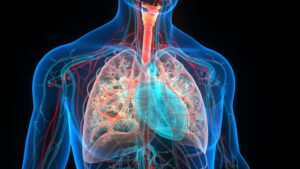Lung cancer remains one of the most challenging medical diagnoses, drawing attention to the critical nature of timely and effective treatment options, particularly in advanced stages.
Stage 3 lung cancer, often referred to as locally advanced disease, indicates that cancer has spread to lymph nodes and potentially to other adjacent tissues, but generally not to distant organs.
Symptoms at this stage can vary widely but may include persistent coughing, chest pain, shortness of breath, fatigue, and weight loss. Accurate diagnosis often involves a combination of imaging tests such as CT scans, PET scans, biopsies, and molecular testing to determine the specific characteristics of the cancer.
Treatment for stage 3 lung cancer is multifaceted and typically aims to control the growth and spread of cancer cells, manage symptoms, and improve survival rates. Options may include surgery to remove tumor masses, chemotherapy to target cancerous cells, radiation therapy to shrink tumors, or a combination of these approaches, known as multimodal therapy. Immunotherapy, which harnesses the patient’s immune system to fight cancer, also plays an increasingly significant role in treatment regimens. The selection of treatment is highly influenced by factors such as the tumor’s location, the patient’s overall health, and lung function.
Prognosis for stage 3 lung cancer varies greatly, influenced by the specifics of tumor biology, the patient’s health status, and response to treatment. While stage 3 lung cancer is serious and presents many challenges, advancements in medical treatments and personalized medicine have enhanced the potential for more favorable outcomes. Ongoing research continues to provide hope and progress in the management of this complex disease.
Diagnosis and Staging

In diagnosing stage 3 lung cancer, the TNM system is crucial to determine the extent of the disease, involving the size and spread of the tumor, the involvement of lymph nodes, and the presence of metastasis.
Understanding TNM Staging
The TNM staging system is an internationally recognized standard for classifying the extent of cancer spread. For stage 3 lung cancer:
- Tumor (T): Refers to the size and extent of the primary tumor. Tumor sizes vary, and a higher number, like T3 or T4, indicates a larger tumor.
- Lymph Nodes (N): Describes whether cancer has spread to the lymph nodes. N2 or N3 signifies involvement of lymph nodes farther from the primary tumor.
- Metastasis (M): Indicates whether cancer has spread to other parts of the body. Stage 3 cancers typically have M0, meaning no distant spread.
Stage 3 lung cancer is further sub-divided into 3A, 3B, and 3C, with increasing tumor size or extent, lymph node involvement, and the area they are located in relation to the lung.
Screening and Initial Tests
Screening for lung cancer is recommended for individuals with a significant smoking history. The preferred method is the low dose computed tomography test (LDCT), which is more effective than a standard chest x-ray at detecting early-stage lung cancers.
Initial tests for diagnosis include:
- Chest X-ray: Often the first test to detect abnormalities.
- CT Scan: Reveals more detailed information, including the presence of enlarged lymph nodes.
- Biopsy: A sample of tissue is taken to confirm cancer.
- MRI or Bone Scan: May be used if there is a suspicion of metastasis.
Symptoms such as coughing up blood warrant immediate investigation, which may involve a combination of the above tests to confirm the presence and stage of lung cancer. Treatment options like lobectomy or pneumonectomy depend on the stage identified during diagnosis.
Treatment Options

When addressing stage 3 lung cancer, treatment options are tailored to the patient’s specific medical condition, with the goal to control the disease and maintain quality of life. The following subsections outline the surgical and non-surgical interventions, as well as emerging treatments.
Surgical Methods
In cases where the lung cancer is deemed operable, surgery may be considered as a central component of treatment. Two primary surgical procedures include:
- Lobectomy: Removal of a single lobe of the lung.
- Pneumonectomy: Removal of an entire lung.
Surgery often accompanies other treatment modalities, such as chemotherapy or radiation therapy, to enhance outcomes. This combination approach is referred to as adjuvant chemotherapy.
Non-Surgical Interventions
For inoperable stage 3 lung cancer or patients unfit for surgery, non-surgical approaches are vital.
- Radiation Therapy: High-energy rays targeted at cancer to destroy cancerous cells in the chest wall and surrounding areas.
- Chemotherapy: Systemic use of drugs to eradicate cancer cells throughout the body.
- Immunotherapy: Bolsters the immune system’s ability to fight cancer.
- Targeted Therapy: Drugs that specifically target certain characteristics of cancer cells.
Palliative care is also considered to manage symptoms and improve quality of life.
Emerging Treatments and Clinical Trials
Patients may have access to the latest treatments under investigation through:
- Clinical Trials: Research studies that explore new treatments or new ways of using existing treatments.
These trials can provide access to novel immunotherapy, targeted therapy, and combined modality treatments not yet widely available, potentially offering additional options for those whose cancer does not respond to standard treatments.
Managing Symptoms & Side Effects

Treatment of stage 3 lung cancer focuses on managing symptoms to improve quality of life and mitigate side effects from various therapies. Appropriate symptom control and side effect management are vital in the overall treatment process.
Common Symptoms of Stage 3 Lung Cancer
Patients with stage 3 lung cancer often experience a variety of symptoms due to the tumor and related health changes. These symptoms include:
- Cough: Persistent and sometimes painful, often accompanied by wheezing.
- Shortness of Breath: Difficulty breathing can be distressing, impacting daily activities.
- Chest Pain: Can range from mild discomfort to severe pain depending on the tumor location.
- Unintentional Weight Loss: Often related to both cancer and decreased appetite.
- Fatigue and Weakness: Common effects resulting from cancer and its treatments.
- Coughing up Blood: A symptom that requires immediate medical attention.
Addressing Treatment Side Effects
Cancer treatments like chemotherapy, radiation therapy, targeted therapy, and immunotherapy can all cause side effects. They might include:
- Chemotherapy: Nausea, vomiting, hair loss, and increased risk of infection
- Radiation Therapy: Skin irritation, fatigue, difficulty swallowing
- Targeted Therapy: Rash, diarrhea, liver problems
- Immunotherapy: Flu-like symptoms, rash, fatigue
Managing these side effects is critical for patients to continue with their treatment regimen.
Supportive Care and Pain Management
Supportive care involves a multidisciplinary approach, ensuring patients receive relief from cancer symptoms and therapy side effects. Pain management is a core component, employing medications and techniques tailored to the individual’s needs. Further support may include:
- Palliative Care: Focused on relieving symptoms, improving comfort, and maintaining quality of life.
- Nutrition: Strategies to address weight loss and maintain strength.
- Respiratory Aid: Use of oxygen therapy or medications to alleviate cough and shortness of breath.
- Physical and Occupational Therapy: To manage weakness and restore function.
Each patient’s care is adjusted based on their specific needs, symptoms, and response to treatment.
Survival Rates and Outlook

Survival rates for stage 3 lung cancer are influenced by various individual factors. Insight into these rates provides an essential perspective on the likely course of the disease.
Factors Affecting Prognosis
Several criteria impact the prognosis of a patient with stage 3 lung cancer. Overall health and age play significant roles in how individuals respond to treatment. Specific health conditions that may coexist, such as heart disease or diabetes, also affect outcomes. The type and characteristics of the cancer cells, particularly whether it’s non-small cell lung cancer (NSCLC) or another form, determine the aggressiveness of the disease. Tumors that have spread to lymph nodes or other organs signify a more challenging scenario. Additionally, a person’s smoking history can influence the prognosis, with a history of smoking potentially leading to a more complex condition to treat.
Understanding Survival Statistics
When discussing survival rates, the American Cancer Society (ACS) often refers to the relative survival rate. This rate compares the survival of individuals with lung cancer to that of the general population. For individuals with stage 3 lung cancer, the relative five-year survival rate provided by the ACS is approximately 23% to 36% for NSCLC and 13% for small cell lung cancer. It’s important to acknowledge that these statistics are based on historical data and do not account for recent advancements in treatment options.
- 5-Year Relative Survival Rates (NSCLC): 23-36%
- 5-Year Relative Survival Rates (Small Cell Lung Cancer): 13%
These statistics are not predictive for any individual case, as survival rates can vary widely based on the factors mentioned earlier and the effectiveness of a patient’s treatment plan.








